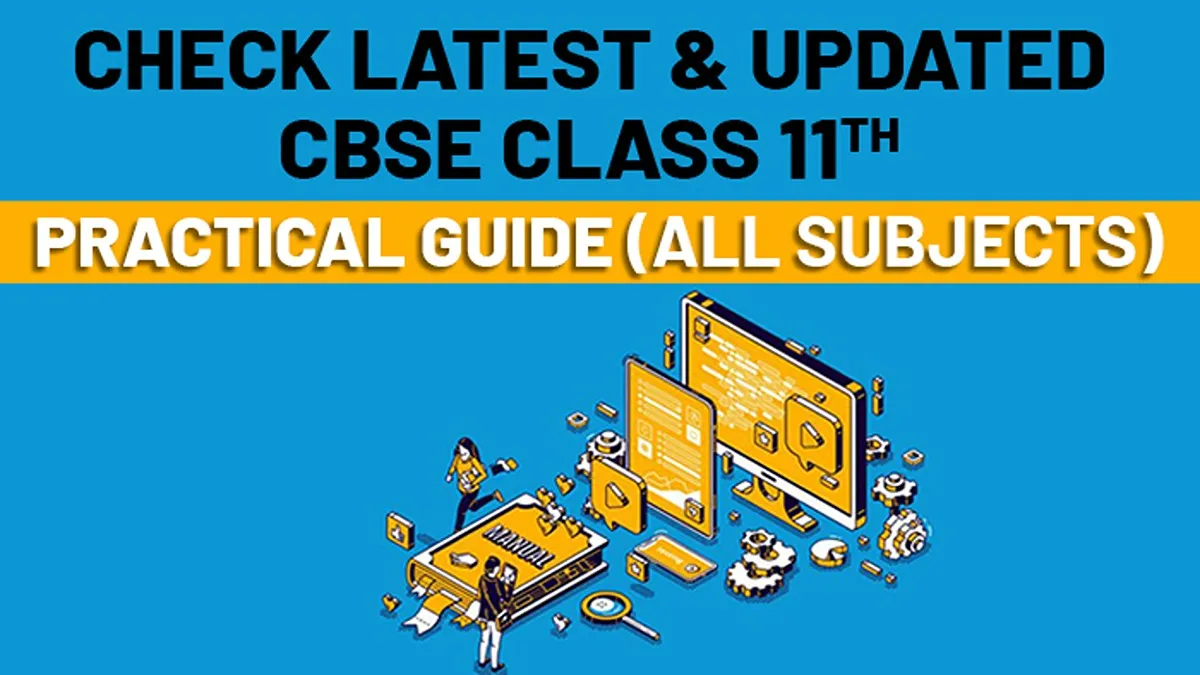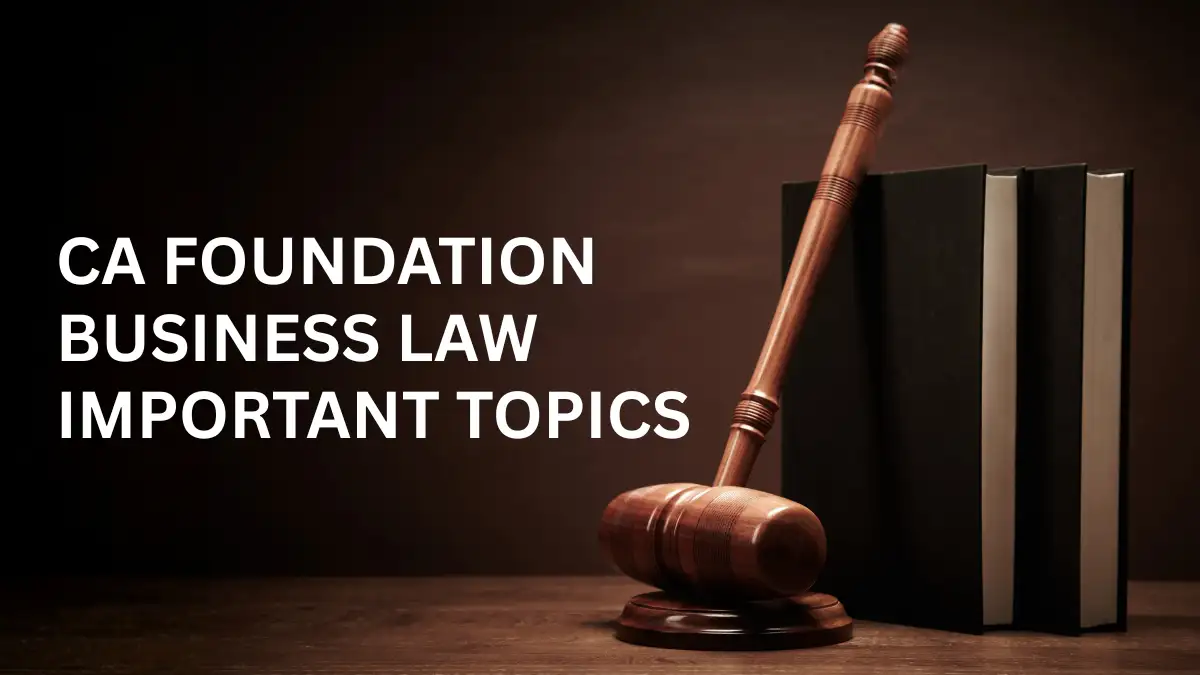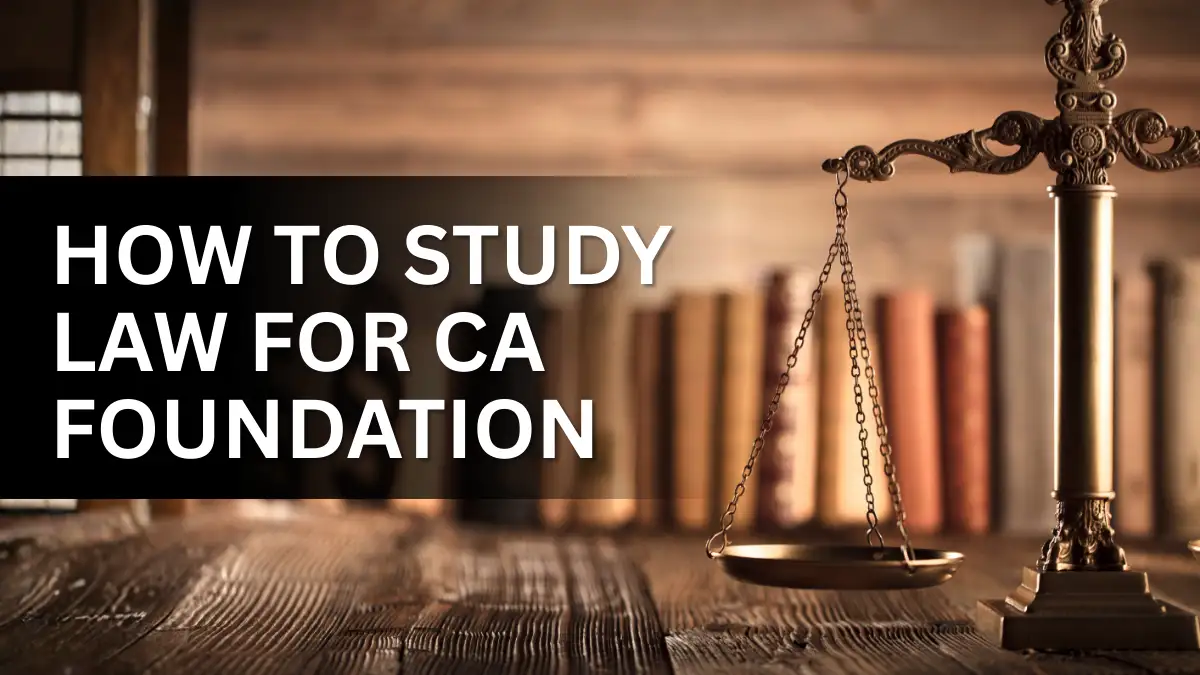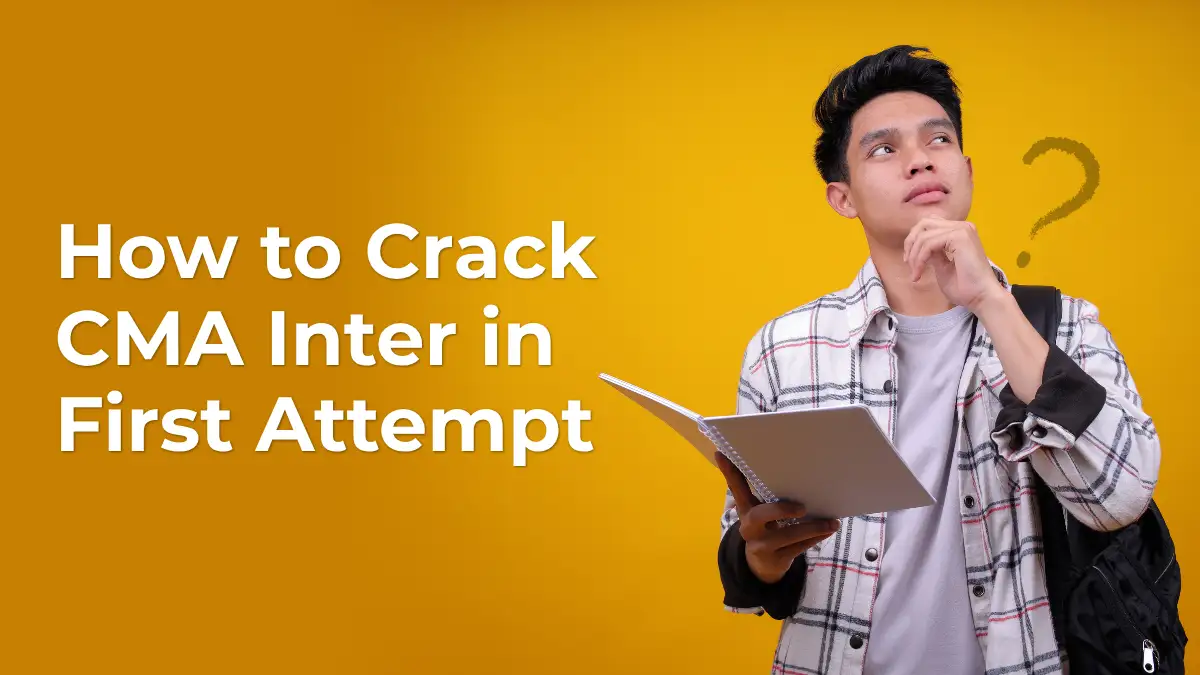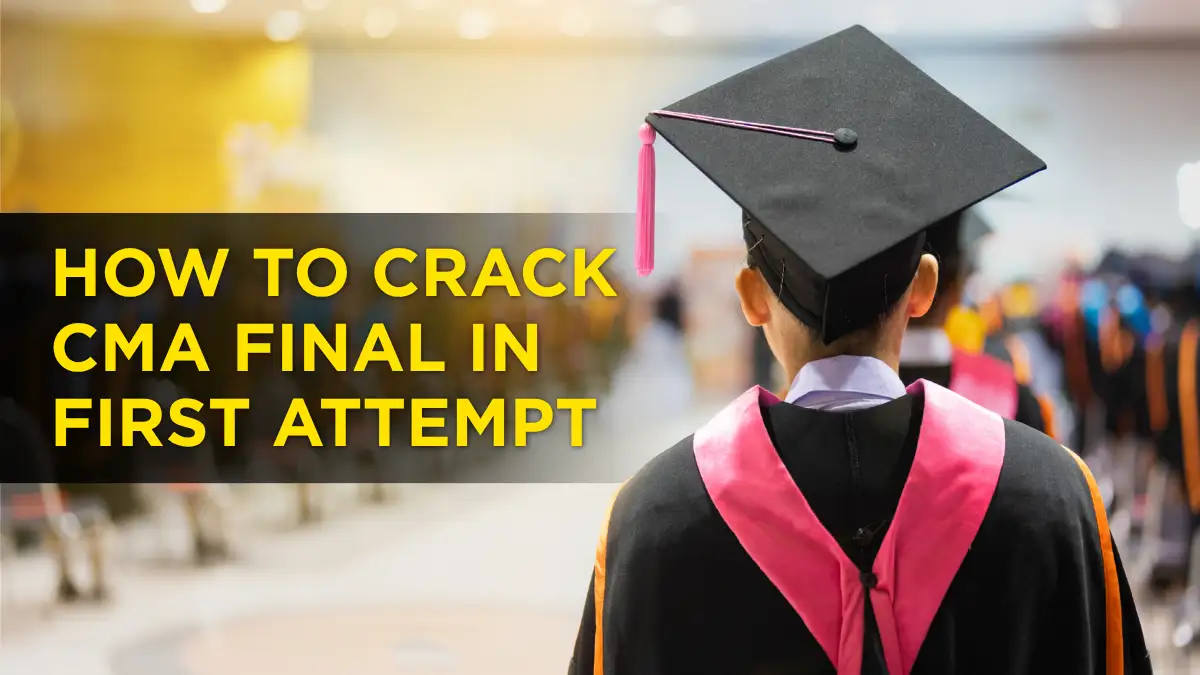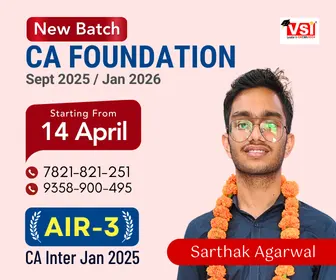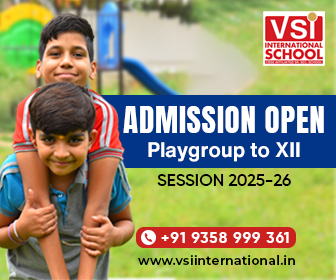The CBSE senior secondary curriculum is designed to prepare you for theoretical concepts and practical work experience. Even if it is only the beginning level theory and practicals, they are very important to make you competent and ready for competitive exams. Like doing the Accountancy subject, practical projects will build a strong base for CA Course. The same goes for other subjects like Business Studies, Entrepreneurship, Chemistry, Physics, Biology, Computer Science, Psychology, etc.
For the practicals in each subject of Commerce, Science, and Humanities stream, CA Wizard has given the CBSE Practical Guidelines 2023-24 with the CBSE Practical Marks Scheme in this article. To download the Class 11 CBSE Practical Syllabus, use the link given in this article.
Download CBSE Class 11 Practical PDF 2023-24
| Subjects | CBSE Class 11 Practical 2023-24 |
| Accountancy | Download |
| Economics | Download |
| Business Studies | Download |
| Entrepreneurship | Download |
| Computer Science | Download |
| Chemistry | Download |
| Biology | Download |
| Physics | Download |
| Fine Arts | Download |
| Political Science | Download |
Class 11 CBSE Practical Exams and Marking Scheme 2023-24
CBSE provides the complete CBSE Syllabus for class 11 and class 12. Even for the practicals and project work, the syllabus is predefined by CBSE. However, for the academic year 2023-24, CBSE has reduced some of the experiments and project work. CBSE has updated its syllabus this year and added some topics in its syllabus.
The Class 11th CBSE Practical Exams are conducted internally in all the schools and are held before the theory exams. All the practical marks are added with your theory paper exams.
| Total Time Allowed: 3 Hrs | Maximum Marks Allotted: 30 marks |
| Two Experiments from Section A & B | 8 marks + 8 marks |
| Experiments & Activities- Practica record | 6 marks |
| Project | 3 Marks |
| Viva on the basis of experiments, activities, and project | 5 marks |
| Total | 30 Marks |
Download CBSE Class 11th Practical Syllabus (2023-24): Subject-Wise
The updated class 11 practical syllabus 2023–24, which includes a thorough syllabus, experiments, activities, and viva questions, can be downloaded by students of class 11 from this page. Class 11 students can also take a review of the marking scheme of each subject.
Class 11 CBSE Accountancy Practical
Project Work: From session 2023-24 onwards, there would be only ONE project (specific) to be prepared.
- Collection of source documents, preparation of vouchers, recording of transactions with the help of vouchers.
- Preparation of Bank Reconciliation Statement with the given cash book and the pass book with twenty to twenty-five transactions.
- Comprehensive project of any sole proprietorship business. This may state with journal entries and their ledgering, preparation of Trial balance. Trading and Profit and Loss Account and Balance Sheet. Expenses, incomes and profit (loss), assets and liabilities are to be depicted using pie chart / bar diagram.
Accountancy Marks Weightage
| Project Work | Marks |
| Practical File | 4 |
| Practical Examination | 12 |
| Viva Voce | 4 |
| Total | 20 |
Class 11 CBSE Economics Practical
Scope of Project:
- Choose a title/topic
- Collection of the research material/data
- Organization of material/data
- Present material/data
- Analysing the material/data for conclusion
- Draw the relevant conclusion
- Presentation of the Project Work
Expected Checklist:
- Introduction of topic/title
- Identifying the causes, consequences and/or remedies
- Various stakeholders and effect on each of them
- Advantages and disadvantages of situations or issues identified
- Short-term and long-term implications of economic strategies suggested in the course of research
- Validity, reliability, appropriateness and relevance of data used for research work and for presentation in the project file
- Presentation and writing that is succinct and coherent in project file
- Citation of the materials referred to, in the file in footnotes, resources section, bibliography etc.
Suggestive List of Projects:
- Effect on PPC due to various government policies
- Invisible Hand (Adam Smith)
- Opportunity Cost as an Economic Tool (taking real life situations)
- Effect of Price Change on a Substitute Good (taking prices from real life visiting local market)
- Effect on equilibrium Prices in Local Market (taking real life situation or recent news)
- Effect of Price Change on a Complementary Good (taking prices from real life visiting local market)
- Solar Energy, a Cost Effective Comparison with Conventional Energy Sources
- Bumper Production- Boon or Bane for the Farmer
- Any other newspaper article and its evaluation on basis of economic principles
- Any other topic
| S.No | Evaluation Scheme | Marks |
| 1 | Relevance of the topic | 3 |
| 2 | Knowledge Content/Research Work | 6 |
| 3 | Presentation Technique | 3 |
| 4 | Viva-voce | 8 |
| Total | 20 |
Class 11 CBSE Business Studies Practical
Students must take any one topic during the academic session of Class XI.
- Project One: Field Visit
- Project Two: Case Study on a Product
- Project Three: Aids to Trade
- Project Four: Import /Export Procedure
- Project Five: A visit to any State Emporium (other than your school state).
The complete details of the projects can be obtained from the CBSE Business Studies Syllabus.
| S.No | Evaluation Scheme | Marks |
| 1 | Initiative, cooperativeness and participation | 2 |
| 2 | Creativity in presentation | 2 |
| 3 | Content, observation and research work | 4 |
| 4 | Analysis of situations | 4 |
| 5 | Viva | 8 |
| Total | 20 |
Class 11 CBSE Maths Practical
| Internal Assessment | Marks |
| Periodic Tests (Best 2 out of 3 tests conducted) | 10 |
| Mathematics Activities | 10 |
| Total | 20 |
Note: Please refer to the CBSE guidelines for practical given under XII Mathematics Syllabus.
Class 11 CBSE Entrepreneurship Practical
Project Work (Any Two files)
- Visit of the District Industries Centre and prepare a report of activities and programs undertaken by them
- Conduct a case study of any entrepreneurial venture in your nearby area.
- Field Visit: Visit any business firm near your locality; interact with the owner of the business firm and prepare a field report on parameters like: type of business, scale of business, product/service dealing in, target customer, problems faced and measures to solve the faced challenges.
- Learn to Earn
- Know your State Handicraft and Handlooms as a means of economic activity for the livelihood of people and intellectual property rights attached to them for the promotion of local specific skills.
| Evaluation Scheme | Marks |
| Project 1 | 10 |
| Project 2 | 10 |
| Numerical Assessment | 5 |
| Viva | 5 |
| Total | 30 |
Note: Students need to complete two projects. Complete guidelines for the project are given in the CBSE Textbook.
Class 11 CBSE Computer Science Practical
Python Programming
- Input a welcome message and display it.
- Input two numbers and display the larger / smaller number.
- Input three numbers and display the largest / smallest number.
- Given two integers x and n, compute 𝑥 .
- Write a program to input the value of x and n and print the sum of the following series: 1+x+x2+x3+x4+ …………xn
1-x+x2-x3+x4+ ……… xn x + x2 – x3 + x4+ ……….. xn 2 3 4 n x + x2 – x3+ x4+ ………… xn 2! 3! 4! n! 5
- Determine whether a number is a perfect number, an armstrong number or a palindrome.
- Input a number and check if the number is a prime or composite number.
- Display the terms of a Fibonacci series.
- Compute the greatest common divisor and least common multiple of two integers.
- Count and display the number of vowels, consonants, uppercase, lowercase characters in string.
- Input a string and determine whether it is a palindrome or not; convert the case of characters in a string.
- Find the largest/smallest number in a list/tuple
- Input a list of numbers and swap elements at the event location with the elements at the odd location.
- Input a list/tuple of elements, search for a given element in the list/tuple.
- Input a list of numbers and test if a number is equal to the sum of the cubes of its digits. Find the smallest and largest such number from the given list of numbers.
- Create a dictionary with the roll number, name and marks of n students in a class and display the names of students who have marks above 75.
Marking Scheme of Computer Science Practical
| S.No | Practicals Evaluation Scheme | Marks |
| 1 | Python program (60% logic + 20% documentation + 20% code quality) | 12 |
| 2 | Report File + Viva: Report file: Minimum 20 Python programs 7 marks Viva voce 3 marks | 10 |
| 3 | Project (that uses most of the concepts that have been learnt See CS-XII for the rules regarding the projects) | 8 |
| Total | 30 |
Class 11 CBSE Information Practices Practical
Suggested Practical List
5.1 Programming in Python
- To find average and grade for given marks.
- To find sale price of an item with given cost and discount (%).
- To calculate perimeter/circumference and area of shapes such as triangle, rectangle, square and circle.
- To calculate Simple and Compound interest.
- To calculate profit-loss for given Cost and Sell Price.
- To calculate EMI for Amount, Period and Interest.
- To calculate tax – GST / Income Tax.
- To find the largest and smallest numbers in a list.
- To find the third largest/smallest number in a list.
- To find the sum of squares of the first 100 natural numbers.
- To print the first ‘n’ multiples of given number.
- Create a dictionary to store names of states and their capitals.
- Create a dictionary of students to store names and marks obtained in 5 subjects.
- To print the highest and lowest values in the dictionary.
5.3 Data Management: SQL Commands
- To create a database
- To create student table with the student id, class, section, gender, name, dob, and marks as attributes where the student id is the primary key.
- To insert the details of at least 10 students in the above table.
- To display the entire content of table.
- To display Rno, Name and Marks of those students who are scoring marks more than 50. 20. To find the average of marks from the student table.
- To find the number of students, who are from section ‘A’.
- To display the information all the students, whose name starts with ‘AN’ (Examples: ANAND, ANGAD,..)
- To display Rno, Name, DOB of those students who are born between ‘2005- 01-01’ and ‘2005-12-31’.
- To display Rno, Name, DOB, Marks, Email of those male students in ascending order of their names.
- To display Rno, Gender, Name, DOB, Marks, Email in descending order of their marks.
- To display the unique section available in the table.
| S.No | Practicals | Marks |
| 1 | Problem solving using Python programming language | 11 |
| 2 | Creating database using MySQL and performing Queries | 7 |
| 3 | Practical file (minimum of 14 python programs, and 14 SQL queries) | 7 |
| 4 | Viva-Voce | 5 |
| Total | 30 |
Class 11 CBSE Chemistry Practical
- Basic Laboratory Techniques
- Cutting glass tube and glass rod
- Bending a glass tube
- Drawing out a glass jet
- Boring a cork
- Characterization and Purification of Chemical Substances
- Determination of melting point of an organic compound.
- Determination of boiling point of an organic compound.
- Crystallization of impure samples of any one of the following: Alum, Copper Sulphate, Benzoic Acid.
- Quantitative Estimation
- Using a mechanical balance/electronic balance.
- Determination of strength of a given solution of Sodium hydroxide by titrating it against standard solution of Oxalic acid.
- Preparation of standard solution of Sodium carbonate.
- Determination of strength of a given solution of hydrochloric acid by titrating it against standard Sodium Carbonate solution.
- Qualitative Analysis
- Determination of one anion and one cation in a given salt Cations- Pb2+, Cu2+, As3+, Al3+, Fe3+, Mn2+, Ni2+, Zn2+, Co2+, Ca2+, Sr2+, Ba2+, Mg2+, NH4 Anions – (CO3) 2- , S2- , NO2 – , SO3 2- , SO2- 4, NO3 – , Cl- , Br- , I- , PO4 3- , C2O 2- 4, CH3COO- (Note: Insoluble salts excluded)
- Detection of -Nitrogen, Sulphur, Chlorine in organic compounds.
- PROJECTS: Scientific investigations involving laboratory testing and collecting information from other sources. A few suggested Projects
- Checking the bacterial contamination in drinking water by testing sulphideion
- Study of the methods of purification of water
- Testing the hardness, presence of Iron, Fluoride, Chloride, etc., depending upon the regional variation in drinking water and study of causes of presence of these ions above permissible limit (if any).
- Investigation of the foaming capacity of different washing soaps and the effect of addition of Sodium carbonate on it
- Study the acidity of different samples of tea leaves.
- Determination of the rate of evaporation of different liquids
- Study the effect of acids and bases on the tensile strength of fibers.
- Study of acidity of fruit and vegetable juices.
Marking Scheme of Chemistry Practical
| Practical Evaluation Scheme | Marks |
| Volumetric Analysis | 8 |
| Salt Analysis | 8 |
| Content Based Experiment | 6 |
| Project Work | 4 |
| Class record and viva 04 | 4 |
| Total | 30 |
Class 11 CBSE Biology Practical
| Evaluation Scheme | Marks |
| One Major Experiment Part A (Experiment No- 1,3) | 5 |
| One Minor Experiment Part A (Experiment No- 4,5, 6) | 4 |
| Slide Preparation Part A (Experiment No- 2) | 5 |
| Spotting Part B | 7 |
| Practical Record + Viva Voce | Credit to the students’ work over the academic session may be given( 4) |
| Practical Record + Viva Voce | 5 |
| TOTAL MARKS | 30 |
Topics Covered in Biology Practical Syllabus
A: List of Experiments
- Study and describe a locally available common flowering plant, from any one family: Solanaceae or Liliaceae (Poaceae, Asteraceae or Brassicaceae can be substituted in case of particular geographical location) including dissection and display of floral whorls, anther and ovary to show number of chambers (floral formulae and floral diagrams).
Preparation and study of T.S. of dicot and monocot roots and stems (primary).
Study of osmosis by potato osmometer.
- Study of plasmolysis in epidermal peels (e.g. Rhoeo/lily leaves or flashy scale leaves of onion bulb).
- Study of distribution of stomata on the upper and lower surfaces of leaves.
- Comparative study of the rates of transpiration in the upper and lower surfaces of leaves.
- Test for the presence of sugar, starch, proteins and fats in suitable plant and animal materials.
- Separation of plant pigments through paper chromatography.
- Study of the rate of respiration in flower buds/leaf tissue and germinating seeds.
- Test for presence of urea in urine.
- Test for presence of sugar in urine.
- Test for presence of albumin in urine.
- Test for presence of bile salts in urine.
B. Study/Observer of the following (spotting)
- Parts of a compound microscope.
- Specimens/slides/models and identification with reasons – Bacteria, Oscillatoria, Spirogyra, Rhizopus, mushroom, yeast, liverwort, moss, fern, pine, one monocotyledonous plant, one dicotyledonous plant and one lichen.
- Virtual specimens/slides/models and identifying features of – Amoeba, Hydra, liverfluke, Ascaris, leech, earthworm, prawn, silkworm, honeybee, snail, starfish, shark, rohu, frog, lizard, pigeon and rabbit.
Different types of inflorescence (cymose and racemose).
- Mitosis in onion root tip cells and animal cells (grasshopper) from permanent slides.
- Human skeleton and different types of joints with the help of virtual images/models only.
Class 11 CBSE Physics Practical
Details of Practicals: The record, to be submitted by the students, at the time of their annual examination, has to include: Record of at least 8 Experiments 4 from each section, to be performed by the students Record of at least 6 Activities [with 3 each from section A and section B], to be demonstrated by teacher. Time Allowed: Three hours Max. Marks: 30
| Evaluation Scheme | Marks |
| Two experiments one from each section | 8+8 |
| Marks Practical record (experiment and activities) | 7 |
| Marks Viva on experiments, and activities | 7 |
| Total | 30 |
SECTION–A
Experiments
- To measure diameter of a small spherical/cylindrical body and to measure internal diameter and depth of a given beaker/calorimeter using Vernier Callipers and hence find its volume.
- To measure diameter of a given wire and thickness of a given sheet using screw gauge. OR To determine volume of an irregular lamina using screw gauge.
- To determine radius of curvature of a given spherical surface by a spherometer.
- To determine the mass of two different objects using a beam balance.
- To find the weight of a given body using parallelogram law of vectors.
- Using a simple pendulum, plot its L-T2 graph and use it to find the effective length of second’s pendulum. OR To study variation of time period of a simple pendulum of a given length by taking bobs of same size but different masses and interpret the result.
- To study the relationship between force of limiting friction and normal reaction and to find the co- efficient of friction between a block and a horizontal surface.OR To find the downward force, along an inclined plane, acting on a roller due to the gravitational pull of the earth and study its relationship with the angle of inclination θ by plotting a graph between force and sin θ.
Activities
- To make a paper scale of given least count, e.g., 0.2cm, 0.5 cm.
- To determine mass of a given body using a metre scale by principle of moments.
- To plot a graph for a given set of data, with proper choice of scales and error bars.
- To measure the force of limiting friction for rolling of a roller on a horizontal plane.
- To study the variation in range of a projectile with angle of projection.
- To study the conservation of energy of a ball rolling down on an inclined plane (using a double inclined plane).
- To study dissipation of energy of a simple pendulum by plotting a graph between square of amplitude and time.
SECTION–B
Experiments
- To determine Young’s modulus of elasticity of the material of a given wire. OR To find the force constant of a helical spring by plotting a graph between load and extension.
- To study the variation in volume with pressure for a sample of air at constant temperature by plotting graphs between P and V, and between P and 1/V.
- To determine the surface tension of water by capillary rise method. OR To determine the coefficient of viscosity of a given viscous liquid by measuring terminal velocity of a given spherical body.
- To study the relationship between the temperature of a hot body and time by plotting a cooling curve.
- To determine specific heat capacity of a given solid by method of mixtures.
- To study the relation between frequency and length of a given wire under constant tension using a sonometer. OR To study the relation between the length of a given wire and tension for constant frequency using a sonometer.
- To find the speed of sound in air at room temperature using a resonance tube by two resonance positions.
Activities
- To observe change of state and plot a cooling curve for molten wax.
- To observe and explain the effect of heating on a bi-metallic strip. 10
- To note the change in level of liquid in a container on heating and interpret the observations. 4. To study the effect of detergent on surface tension of water by observing capillary rise.
- To study the factors affecting the rate of loss of heat of a liquid.
- To study the effect of load on depression of a suitably clamped metre scale loaded at (i) its end (ii) in the middle.
- To observe the decrease in pressure with increase in velocity of a fluid.
Class 11 CBSE Biotechnology Practical
Note: Every student is required to do the following experiments during the academic session.
- Preparation of buffers and pH determination
- Sterilization techniques
- Preparation of bacterial growth medium
- Cell counting
- Sugar Estimation using Di Nitro Salicylic Acid test (DNS test)
- Assay for amylase enzyme
- Protein estimation by biuret method
| Evaluation Scheme | Marks |
| Two experiments | 20 |
| Viva on experiments | 5 |
| Practical record | 5 |
| Total | 30 |
Class 11 CBSE Fine Arts Practical
Unit 1: Nature and Object Study
Study of two or three natural and geometric forms in pencil with light and shade from a fixed point of view. Natural forms like plants, vegetables, fruits and flowers, etc., are to be used. Geometrical forms of objects like cubes, cones, prisms, cylinders and spheres should be used.
Unit 2: Painting Composition
- Simple exercises of basic design in variation of geometric and rhythmic shapes in geometrical and decorative designs and colours to understand designs as organised visual arrangements. (10 Marks)
- Sketches from life and nature (15 Marks)
Unit 3: Portfolio Assessment
- Record of the entire years’ performance from sketch to finished product. (10 Marks)
- Five selected nature and object study exercises in any media done during the session including a minimum of two still-life exercises. (05 Marks)
- One selected work of paintings composition done during the year (03 Marks)
- Two selected works of paintings done during the year (02 Marks) These selected works prepared during the course by the candidates and certified by the school authorities as the work done in the school will be placed before the examiners for assessment.
Note:
- The candidates should be given one hour-break after first three hours.
- The time-table to be so framed as to allow the students to work continuously for minimum of two periods at a stretch.
| S.No | Practicals | Marks |
| 1 | Nature and Object Study | 25 |
| 2 | Painting Composition | 25 |
| 3 | Portfolio Assessment | 20 |
| Total | 70 |
Class 11 CBSE Political Science Practical
Details of Project Work:
- The Project work will be implemented for 20 Marks.
- Out of 20 marks, 10 marks are to be allotted to viva voce and 10 marks for project work.
- For class XII, the evaluation for 20 marks project work should be done jointly by the internal as well
as the external examiners. - The project can be individual/pair/group of 4-5 each. The Project can be made on the topics given in
the syllabus of a particular class. - The suggestive list of activities for project work is as follows: – Role Play, Skit, Presentation, Model, Field Survey, Mock Drills/Mock Event etc.
- The teacher should give enough time for preparation of the Project Work. The topics for Project
Work taken up by the student must be discussed by the teacher in classroom.
| Practicals | Marks |
| Viva | 10 |
| Project | 10 |
| Total | 20 |
Class 11 CBSE Sociology Practical
Project undertaken during the academic year at school level:
- Introduction -2 Marks
- Statement of Purpose – 2 Marks
- Research Question – 2 Marks
- Methodology – 3 Marks
- Data Analysis – 4 Marks
- Conclusion – 2 Marks 15 Marks
| Practicals | Marks |
| Project | 15 |
| Viva | 5 |
| Total | 20 |
Class 11 CBSE Geography Practical
| Practicals | Marks |
| Unit-1: Fundamentals of Maps | 15 |
| Unit-2: Topographic and Weather Maps | 10 |
| Practical Record Book and Viva | 5 |
| Total | 20 |
Viva to be based on Practical Unit I and II only.
Class 11 CBSE Psychology Practical
Practical (Projects, experiments, small studies, etc.) 30 marks.
The students shall be required to undertake one project and conduct one experiment. The project would involve the use of different methods of enquiry and related skills. Practical would involve conducting experiments and undertaking small studies, exercises, related to the topics covered in the course (e.g. Human development, Learning, Memory, Perception and Attention)
| Practicals | Marks |
| Practical (Experiment) file | 5 |
| Project file | 5 |
| Viva Voce (Project and experiment) | 5 |
| One experiment: Conduct of practical- 5 marks Report writing- 10 marks | 15 |
| Total | 20 |
FAQs about Class 11 CBSE Practical
Q1. What are the passing criteria of the CBSE class 11 Practical Exam?
Ans. You need to score a minimum of 33% marks in the practical exam separately from the 33% marks in the theory paper.
Q2. What if I fail in CBSE Practical exam?
Ans. If you fail in a practical exam, you will have to reappear in both theory and practical exams.
Q3. How to score good marks in CBSE practical exams?
Ans. Complete your projects within the CBSE guidelines, submit them on time, be confident during the viva, write the answers clearly, practice for the experiments, and practical problem-solving assessment.
Q4. Which is the best coaching for 11th commerce classes?
Ans: There are many coaching institutes in India who provides commerce classes for class 11th but few of them are able to provide best results. Here, check our list some of top of 11th commerce classes.


